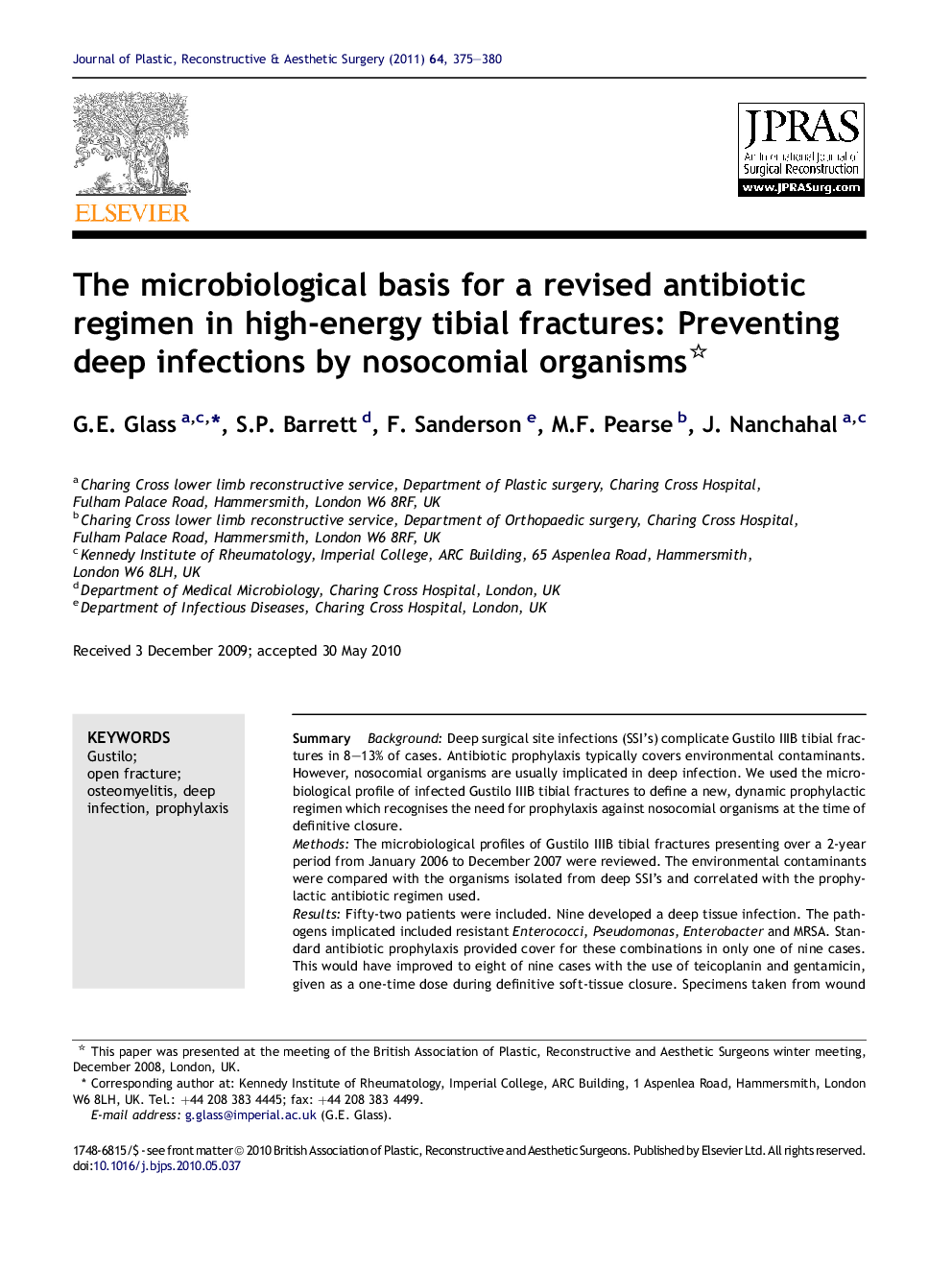| Article ID | Journal | Published Year | Pages | File Type |
|---|---|---|---|---|
| 4119138 | Journal of Plastic, Reconstructive & Aesthetic Surgery | 2011 | 6 Pages |
SummaryBackgroundDeep surgical site infections (SSI’s) complicate Gustilo IIIB tibial fractures in 8–13% of cases. Antibiotic prophylaxis typically covers environmental contaminants. However, nosocomial organisms are usually implicated in deep infection. We used the microbiological profile of infected Gustilo IIIB tibial fractures to define a new, dynamic prophylactic regimen which recognises the need for prophylaxis against nosocomial organisms at the time of definitive closure.MethodsThe microbiological profiles of Gustilo IIIB tibial fractures presenting over a 2-year period from January 2006 to December 2007 were reviewed. The environmental contaminants were compared with the organisms isolated from deep SSI’s and correlated with the prophylactic antibiotic regimen used.ResultsFifty-two patients were included. Nine developed a deep tissue infection. The pathogens implicated included resistant Enterococci, Pseudomonas, Enterobacter and MRSA. Standard antibiotic prophylaxis provided cover for these combinations in only one of nine cases. This would have improved to eight of nine cases with the use of teicoplanin and gentamicin, given as a one-time dose during definitive soft-tissue closure. Specimens taken from wound debridement were neither sensitive nor specific for the subsequent development of deep infection and did not predict the organisms responsible.ConclusionsFollowing high-energy open fracture, a single prophylactic antibiotic regimen directed against environmental wound contaminants does not provide cover for the organisms responsible for deepest SSI’s and may have depopulated the niche, promoting nosocomial contamination prior to definitive closure. We advocate a dynamic prophylactic strategy, tailoring a second wave of prophylaxis against nosocomial organisms at the time of definitive wound closure, and at the same time avoiding the potential complications of prolonged antibiotic use.
